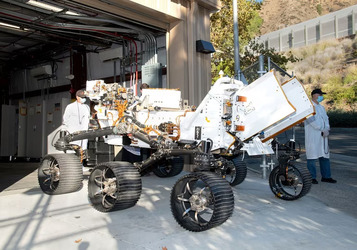The week's pick
Random Articles
Reseach Article
Design and Implementation of an Improved Denial of Service (DoS) Detection System using Association Rule
| Communications on Applied Electronics |
| Foundation of Computer Science (FCS), NY, USA |
| Volume 3 - Number 7 |
| Year of Publication: 2015 |
| Authors: Olasehinde Olayemi, Olayemi Olufunke, Aliyu E. Olubunmi |
 10.5120/cae2015651993
10.5120/cae2015651993
|
Olasehinde Olayemi, Olayemi Olufunke, Aliyu E. Olubunmi . Design and Implementation of an Improved Denial of Service (DoS) Detection System using Association Rule. Communications on Applied Electronics. 3, 7 ( December 2015), 24-29. DOI=10.5120/cae2015651993
Abstract
The need for effective and efficient Denial of Service (DoS) Detection System cannot be overemphasized. This position is as a result of a serious threat to the availability of internet services that limit and block legitimate users access by exhausting victim server’s resources or saturating stub networks access links to the internet services instead of subverting services. Hence the need for a supervised data learning techniques known as association rule mining which has the advantage of generating explainable rules was used to build a classifier for detecting some denial of service attacks, carry out a case study on International Knowledge Discovery and data Mining (KDD ’99) tools, intrusion detection dataset for benchmarking the design of the intrusion detection systems. The average classification rate for unpruned rules is 63.16% while that of the pruned rules is 96.6%. The result revealed that pruned rule sets have better classification performance than the unpruned rule set.
References
- Agrawal R. and Sikrant R., (1994), “Fast Algorithms for mining association rules”, In Proceedings of the 20th VLDB Conference, Santiago, Chile.
- Brignoli, D (2008) “DDoS detection based on traffic self-similarity” Publisher: University of Canterbury. Computer Science and Software Engineering
- Kevin H. and George W. (2001) “A White Paper on Trends in Denial of Service Attack Technology”
- CERT Coordination Center,https://resources.sei.cmu.edu/asset_files/.../2001_019_001_52491.pd Accessed 2014
- Kihong P. and Heejo L.(2000), “ Proactive Approach to Distributed DoS Attack and Prevention using Route-Based Packet Filtering” Network Systems Lab, Department of Computer Sciences, Purdue University,West Lafayette, IN 47907, December 3, 2000
- Larry W. (2007) “Toward The Development of a Defensive Cyber Damage and Mission Impact Methodology” Thesis, Presented to the Faculty Department of Systems Engineering and Management Graduate School of Engineering and Management, Air Force Institute of Technology march 2007
- MirkovicJ.and Peter R.(2004) “A taxonomy of DDos attack and DDos defense mechanisms”. ACM SIGCOMMComputer Communication Review, Volume 34 Issue 2, April 2004
- Moore D., (2003) Inside the slammer worm - Security & Privacy Magazine, IEEE25 January 2003
- Symantec Security Response, (2003) http://www.symantec.com/security_response/writeup.jsp?docid=2003-081113-0229-99&tabid=2. Accessed 2014.
- Symantec Security Response, (2004) http://www.symantec.com/security_response/writeup.jsp?docid=2004-050116-1831-99&tabid=2. Accessed 2014
- William W. Streilein, David J. Fried, Robert K. Cunningham (2005) “Detecting Flood-based Denial-of-Service Attacks with SNMP/RMON” MIT Lincoln Laboratory
- Yeonhee Lee, Youngseok Lee (2011)“Detecting DDoS Attacks with Hadoop
Index Terms
Keywords

